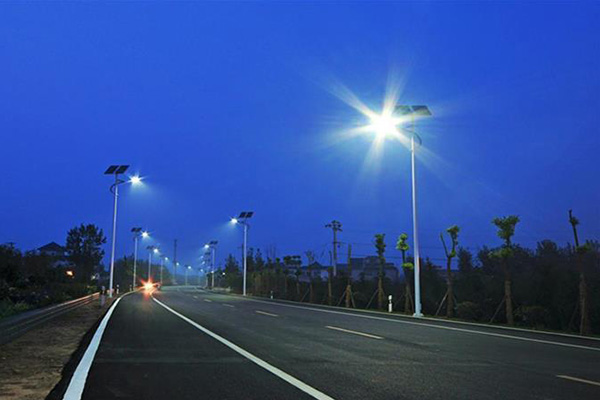Are Solar Street Lights Good? Pros and Cons
In recent years, the push toward renewable energy has gained significant momentum. One of the standout innovations in this sphere is solar street lighting. As cities and communities seek eco-friendly and energy-efficient solutions, solar street lights have emerged as a viable alternative to traditional grid-powered street lighting. But are solar street lights any good? Let’s explore the pros and cons they offer.

The Pros of Solar Street Lights
1. Environmentally Friendly and Renewable Energy Source
One of the primary advantages of solar street lights lies in their use of renewable energy from the sun. By harnessing sunlight and converting it into electricity, these lights significantly reduce reliance on non-renewable energy sources like coal or natural gas. Consequently, this leads to a substantial reduction in greenhouse gas emissions, contributing to the fight against climate change and environmental degradation.
2. Cost-Effective
Solar street lights can be a cost-effective option in the long run, despite higher initial installation costs. Once set up, they operate independently, without the need for electricity from the grid. This means no monthly utility bills and lower maintenance costs, making them an attractive investment for local governments and communities. Additionally, in remote or rural areas, where extending power lines might be expensive, solar street lights offer an affordable and viable lighting solution.
3. Easy Installation and Maintenance
Solar street lights are relatively easy to install, as they do not require extensive electrical wiring or trenching. This also means that installation can be completed quickly, causing minimal disruption to traffic and residents. Furthermore, solar street lights typically have fewer components compared to traditional lighting systems, resulting in reduced maintenance needs and lower maintenance costs over time.
4. Energy Independence and Resilience
One of the standout advantages of solar street lights is their ability to provide lighting even during power outages. This energy independence ensures that vital public areas remain illuminated, enhancing safety and security for pedestrians and motorists alike. In regions prone to natural disasters or areas with unstable power supply, solar street lights can prove to be a reliable and resilient lighting solution.
5. Customizable Designs and Configurations
Solar street lights come in a wide array of designs and configurations to suit various urban or rural landscapes. From sleek and modern designs to more traditional styles, these lights can complement the overall aesthetics of a community. Additionally, they can be equipped with motion sensors and smart controls, allowing for dimming or brightening based on traffic flow, further conserving energy.

The Cons of Solar Street Lights
1. Initial Cost
One of the main drawbacks of solar street lights is their higher upfront cost compared to conventional street lighting options. The initial investment includes the price of solar panels, batteries, controllers, and LED fixtures. However, it is important to note that the long-term savings on operational costs can outweigh the initial expenses.
2. Weather Dependency
Solar street lights rely on sunlight to generate electricity, which means they are affected by weather conditions. During prolonged periods of cloudy or rainy weather, the battery may not receive enough charge to provide adequate lighting throughout the night. While battery technology has improved to mitigate this issue, it remains a concern for some regions with inconsistent weather patterns.
3. Limited Output and Light Coverage
Solar street lights may not provide the same level of brightness or coverage as traditional street lights connected to the grid. In areas that require intense illumination for specific purposes, such as high-traffic intersections, solar street lights might not be the most suitable choice. However, advancements in LED technology are continuously improving the brightness and efficiency of solar street lights.
Conclusion
Are solar street lights any good? The answer largely depends on the specific needs and conditions of the location where they are to be installed. For areas with consistent sunlight, limited access to grid electricity, and a commitment to sustainable practices, solar street lights are a good choice. They offer numerous benefits, including environmental friendliness, cost-efficiency, easy installation, and energy independence.
While the initial costs might be a deterrent for some, the long-term savings and environmental benefits make them a compelling investment. Furthermore, ongoing advancements in technology are addressing some of the drawbacks associated with solar street lights, making them an increasingly viable and attractive lighting solution for our cities and communities.

